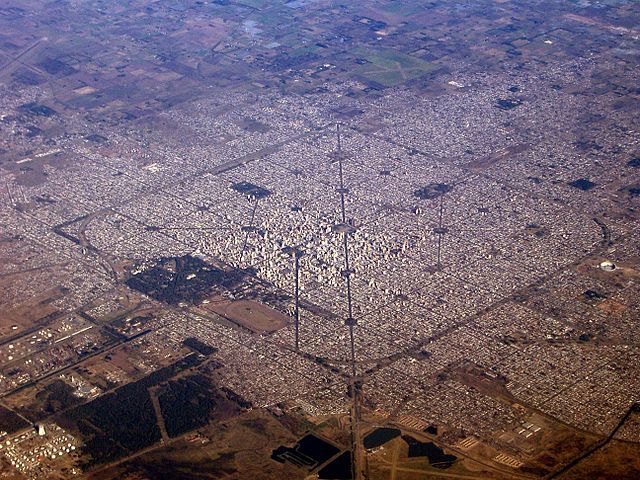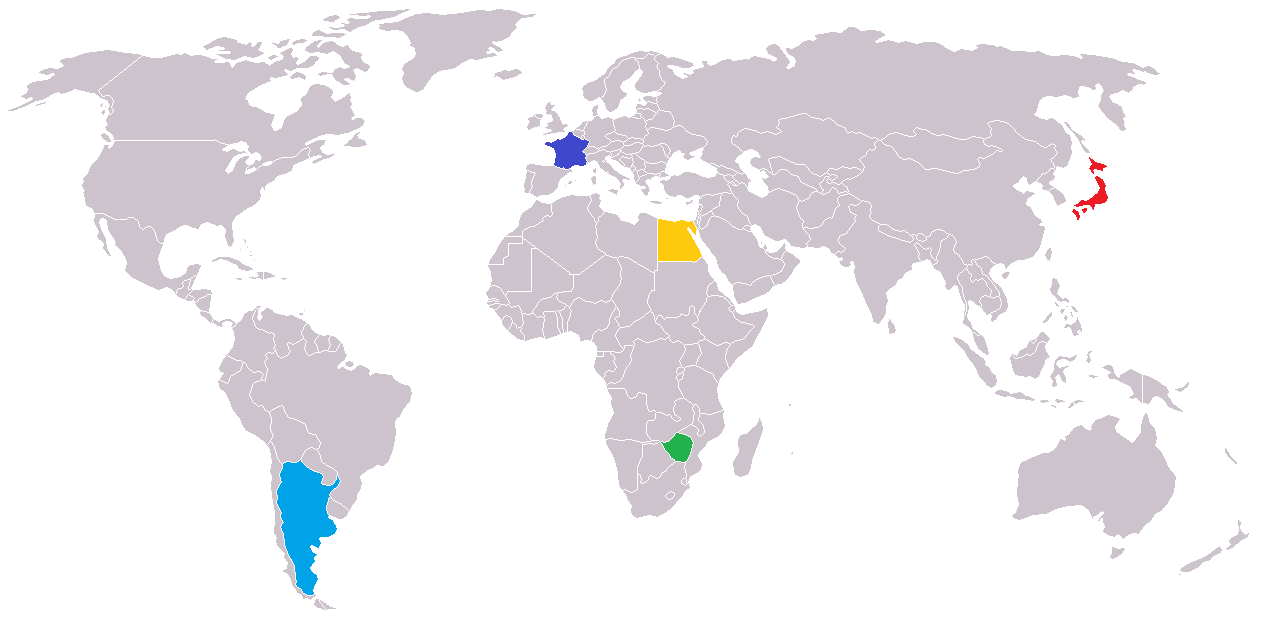{{ article.displayTitle }}
| | {{ 'ml-lesson-number-slides' | message : article.intro.bblockCount }} |
| | {{ 'ml-lesson-number-exercises' | message : article.intro.exerciseCount }} |
| | {{ 'ml-lesson-time-estimation' | message }} |

This lesson will focus on finding relations between these eight angles under the condition that two lines are parallel.
Catch-Up and Review
Here is a recommended reading before getting started with this lesson.
Fixing the Fence
It is a Friday afternoon. Dylan just arrive at home 🏠 from school 🏫. He begins the weekend by mending the fence in his backyard. It broke last night because of extremely strong wind 💨.

Things were going great. While nailing up some boards 🔨, he noticed something. All of the vertical boards are parallel. Also, the horizontal stringers make four angles with each vertical board. Which angles are congruent? Dylan wonders.
Line Intersecting Two or More Lines
When a line l intersects two lines at two different points, the line l receives a special name.
Transversal


Angles Formed by a Transversal
The eight angles formed by a transversal are classified into different groups. These grouping are based on the angle positions relative to the lines involved. As an example, focus on the angles between the two lines and those that are not.
Interior and Exterior Angles
When two lines l_1 and l_2 are cut by a transversal t, eight different angles are created — four around each point of intersection. These angles are classified into two groups according to their positions with respect to lines l_1 and l_2.
- Interior angles: the angles that are between the lines l_1 and l_2.
- Exterior angles: the angles that are outside the lines l_1 and l_2.

In the diagram, all the even-numbered angles are interior angles, and all the odd-numbered angles are exterior angles.
| Interior Angles | Exterior Angles |
|---|---|
| ∠ 2, ∠ 4, ∠ 6, ∠ 8 | ∠ 1, ∠ 3, ∠ 5, ∠ 7 |
Relationships Between Interior Angles
Of the eight angles formed by a transversal that intersects two lines, the four interior angles are also classified according to their position with respect to the transversal.
Alternate Interior Angles

| If | Then |
|---|---|
| l_1 ∥ l_2 | ∠ 3 ≅ ∠ 5 and ∠ 4 ≅ ∠ 6 |
| ∠ 3 ≅ ∠ 5 or ∠ 4 ≅ ∠ 6 | l_1 ∥ l_2 |
The Louvre Museum


Hint
Solution

The interior angles are those angles that lie between the two lines that are cut. In the mosaic, the regions 1, 3, 5, and 8 correspond to interior angles. Focus on these regions.

Alternate interior angles are interior angles with different vertices that lie on opposite sides of the transversal. Of the regions highlighted before, the following pairs correspond to alternate interior angles. Regions1 and 8 Regions3 and 5 Dylan only wants the alternate interior angles that are acute. The regions 1 and 8 correspond to acute angles. The regions 3 and 5 are obtuse angles. These can be verified with the help of a protractor. Dylan is now ready to paint the regions 1 and 8 blue.

Nicely done! Now Dylan has six regions remaining to paint.

The angles ABD and CAB are interior angles with different vertices that lie on opposite sides of the transversal. Therefore, these two angles are alternate interior angles. Alternate Interior Angles ∠ ABD and ∠ CAB Since the lines l_1 and l_2 are parallel, the mentioned angles are congruent. As a result, they have the same measure. That is enough information for the value of x to be identified. ∠ ABD ≅ ∠ CAB ⇓ x = 116
Extra
Interesting Facts About the Louvre- It is the most visited art museum in the world.
- It is the largest museum in the world. It covers over 15 acres.
- Originally, it was constructed as a fortress by King Phillip of France in 1190. In the 14th century, the Louvre was turned into a royal residence. Since 1793, it was opened to the public as Muséum central des arts de la République.
- From 1803 to 1814 it was named Napoleon Museum.
- The Mona Lisa was stolen from the Louvre in 1911. This incident rose the popularity of the painting across the globe. It was recovered two years later.
- During World War II, the Louvre was emptied to protect all of the art pieces.
- There are five pyramids in the Louvre.
- In 2016, the second Louvre of the world was opened. It is located in Abu Dhabi.

Relationships Between Exterior Angles
It was just taught that the four interior angles can be divided into two pairs of alternate interior angles. The same can be said for exterior angles. They can also be grouped into two pairs.
Alternate Exterior Angles

| If | Then |
|---|---|
| l_1 ∥ l_2 | ∠ 1 ≅ ∠ 7 and ∠ 2 ≅ ∠ 8 |
| ∠ 1 ≅ ∠ 7 or ∠ 2 ≅ ∠ 8 | l_1 ∥ l_2 |
So far, the eight angles formed by a transversal and two parallel lines have been divided into two groups. In addition, each of these two groups has been divided into a subgroup.

La Plata City - Argentina
Dylan continued to flip through the photo book. A picture his parents took in La Plata, Argentina fascinated him. He did an internet search to learn more. He discovered that it is one of the best-planned cities of the world. It is shaped like a square grid with some diagonal avenues, squares, and traffic circles.
Astonished by the structure of the city, he zoomed in on the map and saw that many interior streets are parallel to each other. For example, he noticed that the streets named Calle 8 and Calle 9 are parallel.

Hint
callein Spanish means
streetin English.
callein Spanish means
streetin English.
Solution

Notice that FE and CB lie over the street named Diagonal 77. This implies that these two segments lie over the same line. Also, GE lies over the street named Calle 8, and CH lies over Calle 9. That means the lines containing the segments are parallel since the two streets are parallel.

The diagram shows two parallel lines cut by a transversal. This means that ∠ BCH and ∠ FEG are alternate exterior angles.

m∠ BCH= 129, m∠ FEG= 3x
.LHS /3.=.RHS /3.
Rearrange equation

Note that AB and DE lie over the street named Diagonal 77. That means these two segments lie over the same line. Additionally, BG lies over Calle 42 and DH lies over Calle 43. These two streets are parallel. This implies that the lines containing the segments are also parallel.

The diagram shows two parallel lines cut by a transversal. That characteristic means that ∠ GBA and ∠ HDE are alternate exterior angles.

Interior Angles on the Same Side of the Transversal
The alternate interior angles lie on opposite sides of the transversal. Now it is time to get to know the interior angles with different vertices that lie on the same side of the transversal.
Same-Side Interior Angles

| If | Then |
|---|---|
| l_1 ∥ l_2 | m ∠ 3+m ∠ 6=180^(∘) and m ∠ 4 + m ∠ 5 = 180^(∘) |
| m ∠ 3+m ∠ 6=180^(∘) or m ∠ 4 + m ∠ 5 = 180^(∘) | l_1 ∥ l_2 |
Pyramids of Giza
Dylan is still mesmerized by the travel album. He is staring at a photo of the Giza Pyramids in Egypt. His parents teach him about them. They were built as tombs of Egyptian pharaohs. The tallest pyramid is called the Great Pyramid. There are seven wonders of the ancient world — only the pyramids are still standing.

Hint
Draw the sides of the angles marked in the photo. Notice that these angles are consecutive interior angles.
Solution
Start by drawing the sides of the angles marked in the photo to relate these two angles.

Notice that the non-common sides of the angles are parallel to each other. Additionally, the common side can be seen as a transversal. The marked angles lie between the parallel lines and they are on the same side of the transversal.

Extra
Seven Wonders of the Ancient World- The Pyramids of Giza
- Hanging Gardens of Babylon
- Temple of Artemis
- Statue of Zeus
- Mausoleum at Halicarnassus
- Colossus of Rhodes
- Lighthouse of Alexandria
Exterior Angles on the Same Side of the Transversal
It is now time to learn about the grouping of exterior angles that have different vertices but are on the same side of the transversal.
Same-Side Exterior Angles

| If | Then |
|---|---|
| l_1 ∥ l_2 | m ∠ 1+m ∠ 8=180^(∘) and m ∠ 2 + m ∠ 7 = 180^(∘) |
| m ∠ 1+m ∠ 8=180^(∘) or m ∠ 2 + m ∠ 7 = 180^(∘) | l_1 ∥ l_2 |
Number of Countries in Africa
Dylan was loving the stories his parents were telling. He asked for them to tell another. One of his parents looked through the photos and saw an elephant 🐘. What a beautiful safari they had while in Zimbabwe.
Dylan's curiosity peaked. He asked for more details about Zimbabwe. His parents told him that it is a country in South East Africa whose flag is made up of many parallel lines. The flag reminds them of a riddle they were challenged with during the trip. Dylan's parent drew some angles on the flag to prepare the riddle.

His parent begins the riddle.
|
Consider what I drew on Zimbabwe's flag. The number of countries in all of Africa equals three times x. How many countries are there in Africa? |
Hint
Draw the sides of the angles marked on the flag. The horizontal sides are parallel to each other. The other sides can be connected to form a transversal. Notice that the marked angles are same-side exterior angles.
Solution
Try to relate the two marked angles in a way that the value of x can be found. It seems like a good idea to start by drawing the sides of these angles.

Notice that the horizontal sides are parallel to each other. Additionally, the sides lying on the border of the triangular region lie on the same line. For this reason, those two sides can be connected to form a transversal.

Dylan's parent drew the angles on top of the flag. Draw the angles now without the flag for a clearer view.

Add and subtract terms
LHS+18=RHS+18
.LHS /11.=.RHS /11.
Relating Interior and Exterior Angles
When a transversal cuts two lines, the interior angles can be paired in two different ways: as alternate angles or same-side angles. Something similar happens with exterior angles. Notice that each of these pairs is made up of either two interior angles or two exterior angles.

It is worth asking if an interior angle can be related to an exterior angle. The following concept establishes that type of relationship.
Corresponding Angles

- One angle is exterior and the other is interior.
- The angles have different vertices.
- The angles lie on the same side of the transversal.
In the diagram, four pairs of angles can be identified as corresponding angles.
| Pair | Position Relative to the Vertex | Position Relative to the Transversal |
|---|---|---|
| ∠ 1 and ∠ 5 | Northeast | Right |
| ∠ 2 and ∠ 6 | Northwest | Left |
| ∠ 3 and ∠ 7 | Southwest | Left |
| ∠ 4 and ∠ 8 | Southeast | Right |
If two parallel lines are cut by a transversal, then the corresponding angles are congruent. The same logic in reverse can be applied. If two lines and a transversal form corresponding angles that are congruent, then the lines are parallel.
| If | Then |
|---|---|
| l_1 ∥ l_2 | ∠ 1 ≅ ∠ 5, ∠ 2 ≅ ∠ 6, ∠ 3 ≅ ∠ 7, and ∠ 4 ≅ ∠ 8 |
| ∠ 1 ≅ ∠ 5, ∠ 2 ≅ ∠ 6, ∠ 3 ≅ ∠ 7, or ∠ 4 ≅ ∠ 8 | l_1 ∥ l_2 |
Bridges and Boats
Dylan is having an incredible weekend full of stories and learning. He is impressed with all the countries his parents have visited. So far, they have talked about France, Argentina, Egypt, and Zimbabwe. With a huge smile, Dylan's parents tell him that they have been to Japan too.
In Japan they sailed ⛵ along the longest suspension bridge in the world at the time. It is called Akashi Kaikyo Bridge. In disbelief, Dylan looked for those photos in the album.


Hint
Solution

Notice that the vertical sides lie on the left vertical beam. That implies they lie on the same line. This line acts like a transversal cutting the two parallel diagonal beams.

Draw the given information without the photo in the background for a clearer visual of the angles, lines, and transversal.

LHS-2x=RHS-2x
LHS+28=RHS+28
.LHS /2.=.RHS /2.
Rearrange equation
x= 17
Multiply
Subtract term

The two diagonal bars are parallel to each other according to what Dylan sees. The upper angle is exterior while the lower angle is an interior angle. Additionally, both angles lie on the same side of the transversal.

Distribute 7
Subtract term
LHS-6y=RHS-6y
LHS+10=RHS+10
Rearrange equation
Extra
World Longest Suspension BridgeThe Akashi Kaikyo Bridge was the longest suspension bridge in the world from April 1998 to March 2022. It connects the city of Kobe with Iwaya. In March 2022, the 1915 Çanakkale Bridge was opened in Türkiye. This bridge is 2023 meters long, only 32 meters longer than the Akashi Kaikyo Bridge.
Identifying Pairs of Angles
Consider two lines l_1 and l_2 that are cut by the transversal t. Identify the pair of angles labeled.

Parallel Lines and Transversals
Dylan was fixing the fence of his home. He noticed that all the vertical boards were parallel, and the horizontal stringers formed angles with each vertical board.

Making this discovery about the fence made him wonder about two things.
- Which angles are congruent to ∠ 7?
- Which angles are congruent to ∠ 1?
These two questions can be answered thanks to all of the information learned in this lesson. To start, focus on ∠ 7.

The diagram shows the lines of two vertical boards and the horizontal stringer. Notice that ∠ 7 can be related to some of the other angles according to its position relative to the transversal and to the parallel lines.
| Angles | Relation |
|---|---|
| ∠ 7 and ∠ 4 | Alternate Interior Angles |
| ∠ 7 and ∠ 3 | Consecutive Interior Angles |
| ∠ 7 and ∠ 2 | Corresponding Angles |
| ∠ 7 and ∠ 5 | Vertical Angles |
Since ∠ 7 and ∠ 5 are vertical, they are congruent. However, there is more! Because the lines l_1 and l_2 are parallel, some of the first three pairs of angles are congruent and some are supplementary.
| Angles | Relation | Relationship Between Measures |
|---|---|---|
| ∠ 7 and ∠ 4 | Alternate Interior Angles | Congruent |
| ∠ 7 and ∠ 3 | Consecutive Interior Angles | Supplementary |
| ∠ 7 and ∠ 2 | Corresponding Angles | Congruent |
| ∠ 7 and ∠ 5 | Vertical Angles | Congruent |
The angles congruent to ∠ 1 can be determined following a similar method. Again, study the given diagram. This time, write the relations for ∠ 1 in relation to ∠ 8, ∠ 5, ∠ 6, and ∠ 7.
| Angles | Relation | Relationship Between Measures |
|---|---|---|
| ∠ 1 and ∠ 8 | Alternate Exterior Angles | Congruent |
| ∠ 1 and ∠ 5 | Same-Side Exterior Angles | Supplementary |
| ∠ 1 and ∠ 6 | Corresponding Angles | Congruent |
| ∠ 1 and ∠ 3 | Vertical Angles | Congruent |
It is time to update the diagram. Recall that congruent angles are denoted with the same number of angle markers.



